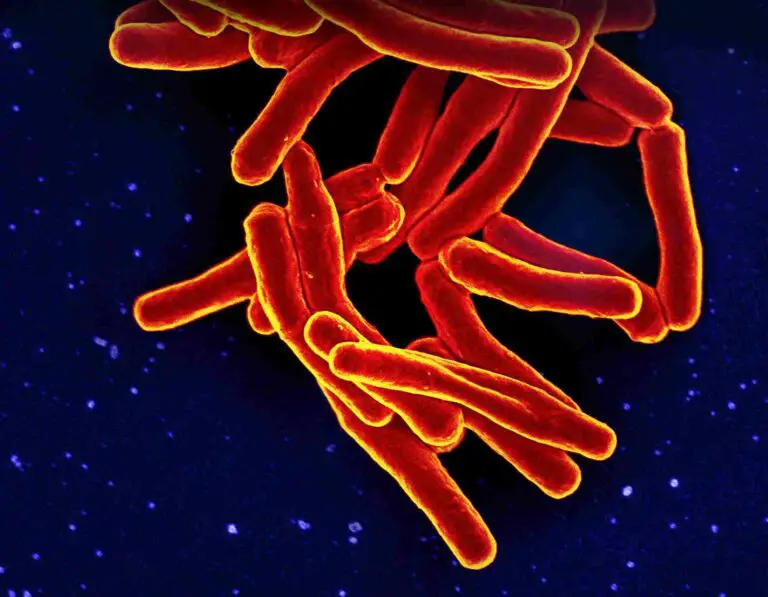7 Causes of Heat Waves Explained
Causes of heat waves are; high pressure, high temperature solar radiation, trapped gases, wind and ocean currents, solar intensity changes, climate change, and ozone layer depletion.
They can be broadly grouped into conditional, natural and manmade causes.
This article discusses the causes of heat waves, as follows;
-Conditional Causes of Heat Waves
-Conditional Causes of Heat Waves
Conditional causes of heat waves are high pressure, solar radiation, high temperature, and trapped gases.
These are the causes of heat waves that establish the required conditions for this hazard to occur. They are discussed as follows;
1). High Pressure (as one of the Causes of Heat Waves)
High pressure is one of the most important causes of heat waves. This pressure is usually exerted by water vapor and other gaseous elements in the atmosphere.
In order for a heat wave to occur, atmospheric pressure must be at a high level, especially in regions between 10,000 and 25,000 ft above sea level [17].
The region of high atmospheric pressure is usually well-defined due to its intensity compared to adjacent areas. It can be described as a ‘pressure cap’ in the atmosphere.
Severity and length of occurrence of heat wave events, depend on the intensity and duration of this atmospheric pressure imbalance.
Usually, heat waves occur when large volumes of warm air are compressed against the Earth’s surface by pressure from the upper atmosphere. Because the severity of the heat wave is proportional to the volume (and temperature) of warm air, heat waves become more severe and hazardous with longer duration.
The pressure chart below shows that areas of high atmospheric pressure (represented by isobar contours) coincide with the location of heat wave events in southern British Columbia.

2). Solar Radiation and High Temperature
High temperature is an essential cause of heat waves. The main source of this temperature is solar radiation, or solar energy.
Solar energy can be said to come from the conversion of nuclear energy, through spontaneous fusion reactions involving the gaseous hydrogen isotopes that make up the Sun [5]. This energy is transmitted toward the Earth as radiant heat and light.
The importance of temperature in the occurrence of heat waves is such that a heat wave event is defined based on temperature.
When atmospheric temperature is 30°C and above for up to three consecutive days, a heat wave is said to have occurred [10]. However, based on other physicochemical factors like humidity, this threshold may vary.
Although high temperature from solar radiation is one of the causes of heat waves, there are some misconceptions about the role of this factor.
These misconceptions include the belief that heat waves occur because the Sun is becoming hotter, or getting closer to the Earth. Others include the idea that heat waves are related to (and caused by) solar flares.
A solar flare is an event in which unusually high amounts of solar radiation and magnetic energy are released from the Sun [9]. Heat waves are not caused by solar flares, because the heat energy released during solar flare events is not sufficient or long-lasting enough to cause a heat wave.
Also, heat waves do not occur due to any increase in the heat energy of the Sun, or any decrease in the distance between the Sun and Earth.
In terms of temperature, heat waves occur mainly because of the presence of highly-compressed greenhouse gases close to the Earth’s surface [11]. These gases absorb and retain heat from the Sun, which then warms the surface of the Earth.
Under normal circumstances, when solar radiation strikes the Earth’s surface, some of it is reflected back into the atmosphere. This mechanism is related to various geochemical and biological processes, like evaporation, transpiration, condensation, precipitation, and other aspects of the hydrological cycle.
However, when pressure in the upper atmosphere is high, it causes greenhouse gases to be trapped close to the Earth’s surface.
These gases prevent solar radiation from reflecting back into the upper atmosphere after it strikes the Earth. As a result, the solar radiation builds up and causes the high-temperature condition called heat waves.
The presence of solar radiation as a major factor in heat waves can be observed in the damage of solar panels during heat wave events [14]. This renewable energy technology is designed to absorb and convert solar energy to electricity. Excessive radiation that is absorbed during heat wave events, often lead to their damage.
Below is a profile showing the distribution of temperature within a heat wave zone in central USA. Notice how temperature is highest at the point of heat wave occurrence.

3). Trapped Gases (as one of the Causes of Heat Waves)
Gases are the medium by which heat is transmitted during heat wave events. This means that in order for a heat wave to occur, a sufficient volume of gas must be present.
Under normal circumstances, the atmosphere above the Earth is constantly filled with gases like oxygen, nitrogen and carbon dioxide. However, these gases are continuously in motion, flowing in various directions under the influence of gravity, solar radiation and albedo [4].
During heat waves, the motion of atmospheric gases is limited. As pressure builds in the upper atmosphere, a pressure dome or cap forms. This pressurized zone prevents gases beneath it from flowing across the Earth’s surface. The gases are therefore stagnated.
Naturally, warm air from the Earth’s surface is less dense than cool air, and is supposed to rise and move toward the upper atmosphere [7].
This is the mechanism by which evaporation occurs; it causes cooling and prevents unhealthy build-up of heat close to the Earth. It is also the mechanism by which solar radiation is reflected away from the Earth’s surface into the atmosphere.
In the case of heat wave events, pressure from the upper atmosphere causes warm air to sink toward the Earth’s surface, rather than to rise away from it. This air usually consists of greenhouse gases that trap latent heat.
It is important to note that as the duration of a heat wave increases, the volume of warm gas close to the Earth’s surface increases as well. There are some biological and anthropogenic processes occurring on the Earth’s surface that contribute to this gas buildup. They include biodegradation, respiration, mining, petroleum refining, combustion and electricity generation.
The degree of compression of the gases close to Earth’s surface, is proportional to the severity of a heat wave. Compression itself is caused by pressure. This is explained by some of the gas laws such as Gay Lussac’s law, which states that the pressure of a gas is proportional to its temperature [18].
-Natural Causes of Heat Waves
Natural causes of heat waves are; wind and ocean currents, and changes in solar intensity.
These are the factors involved in heat wave events, that are of natural origin, and are not the result of human activities. When it is caused by natural factors, a heat wave can be described as a natural hazard.
Heat waves have a high risk-factor compared to other hazards like floods and landslides, as they can cause health and safety problems like heat stroke [13], and have negative social and economic consequences. They are also closely related to hazards like forest fires [15].

4). Wind and Ocean Currents
Natural wind and ocean currents can contribute to the occurrence of heat waves.
Prevailing winds in adjacent regions determine if and how heat waves occur.
In order for a heat wave event to occur, air currents in adjacent areas to the affected region, either have no significant effect, or support the accumulation of warm air close to the Earth’s surface.
Some studies suggest that in areas that are prone to desertification, prevailing winds may transport warm air into the high-pressure zone, and thereby increase the intensity of heat waves [8].
Such an argument can explain why heat waves occur in areas with humanitarian problems like drought, food insecurity and hunger. It also explains the seasonality of heat wave events.
Ocean currents contribute to heat waves, because of the role of the marine ecosystem in regulating climatic conditions on Earth [2].
Wave power from oceans, works together with wind energy. They both determine the natural distribution of gases close to the Earth’s surface. In the case of a heat wave, ocean currents can influence the balance of temperature and atmospheric pressure, and therefore affect the occurrence of severity of the event.
It is important to note that the effectiveness of natural factors like wind and ocean currents to regulate Earth’s temperature, is reduced by the enormous impact of human activities on the Earth.
5). Changes in Solar Intensity (as one of the Causes of Heat Waves)
The intensity of solar radiation which reaches the Earth’s surface, varies in nature [6].
This variation may be due to the relative positions of the Earth and Sun at different times. It may also be caused by featured on the Earth’s surface such as vegetation, oceans, and glacier, which interact with solar radiation.
When solar intensity becomes more intense for a relatively long period of time, it can contribute to heat wave occurrence. This is different from short term variations like solar flares and sunspots, which have no influence on heat waves.
Natural changes in solar radiation cannot directly or solely cause heat waves to occur. However, they can contribute the high-temperature condition of heat waves by transmitting more solar radiation toward the Earth’s surface.
-Manmade Causes of Heat Waves
Manmade causes of heat waves are climate change, and ozone layer depletion.
6). Climate Change
Climate change is one of the most common causes of heat waves. It is also the most effective cause.
Studies have shown that the frequency and severity of heat wave events have increased significantly with the worsening of climate change and global warming [11].
With respect to this, it is accurate for us to view climate change as a type of large-scale environmental degradation that has resulted mainly from human activities.
It involves the rise in environmental temperatures, also known as global warming. The indicators or effects of climate change include flooding, glacier melting, and desertification.
Causes of climate change include fossil fuel combustion, livestock rearing, improper waste management, and deforestation.
Considering climate change to be a form of degradation, measures to prevent and mitigate this problem and its effects include; physical environmental remediation, bioremediation, waste-to-energy conversion, use of low-emission alternatives like biofuel, wind, and geothermal energy, sustainable farming and soil conservation.
Climate change causes heat waves by altering air quality with introduction of heat-trapping gases, and changing the natural trend of air currents.
7). Ozone Layer Depletion (as one of the Causes of Heat Waves)
Ozone layer depletion contributes to the occurrence and severity of heat waves because it allows more solar radiation to reach the Earth’s surface. It is also linked to climate change, which is a major cause.
However, ozone depletion is not one of the major causes of heat waves, or climate change. It only ensures that more radiation is supplied to heat-up the compressed air near the surface of the Earth.
The layer of ozone (O3) gas in the stratosphere above the Earth is what protects the Earth from harmful and excessive solar radiation [3]. On the other hand, ground-level or near-surface ozone is formed near the Earth’s surface during heat waves [12].
This type of ozone is a product of the reaction between volatile organic compounds (VOCs) and nitrogen oxides (NOx) [1]. Its production is accelerated by high temperature.
Ground-level ozone is responsible for some respiratory ailments that occur during heat wave events [16].
Conclusion
Causes of heat waves are
- High Pressure
- Solar Radiation and High Temperature
- Trapped Gases
- Wind and Ocean Currents
- Changes in Solar Intensity
- Climate Change
- Ozone Layer Depletion
References
1). Araya, R. T.; Seguel, R.; Morales, R. G.; Leiva-Guzmán, M. A. (2014). “Ozone, nitrogen oxides and volatile organic compounds in a central zone of Chile.” Air Quality Atmosphere & Health Accepted. Available at: https://www.researchgate.net/publication/259971076_Ozone_nitrogen_oxides_and_volatile_organic_compounds_in_a_central_zone_of_Chile. (Accessed 11 August 2022).
2). Bigg, G. R.; Jickells, T. D.; Liss, P. S.; Osborn, T. J. (2003). “The role of the oceans in climate.” International Journal of Climatology 23(10):1127 – 1159. Available at: https://doi.org/10.1002/joc.926. (Accessed 11 August 2022).
3). Chapagain, N. P. (2016). “Atmospheric Ozone Layer Depletion and its Impact.” Available at: https://www.researchgate.net/publication/322602484_Atmospheric_Ozone_Layer_Depletion_and_its_Impact. (Accessed 11 August 2022).
4). Govindasamy, B.; Caldeira, K.; Nemani, R.; Cao, L.; Ban-Weiss, G.; Shin, H. (2010). “Albedo enhancement of marine clouds to counteract global warming: Impacts on the hydrological cycle.” Climate Dynamics 37(5):915-931. Available at: https://doi.org/10.1007/s00382-010-0868-1. (Accessed 11 August 2022).
5). Haider, Q. (2019). “Nuclear Fusion: Holy Grail of Energy.” Nuclear Fusion. https://doi.org/10.5772/intechopen.82335. (Accessed 11 August 2022).
6). Haigh, J. D. (2003). “The effect of solar variability on the Earth’s climate.” Philosophical Transactions of The Royal Society A Mathematical Physical and Engineering Sciences 361(1802):95-111. Available at: https://doi.org/10.1098/rsta.2002.1111. (Accessed 11 August 2022).
7). Hurley, B. (2020). “Where does the wind come from?” Available at: https://www.researchgate.net/publication/348603483_Where_does_the_wind_come_from. (Accessed 11 August 2022).
8). Khan, H.; Paolini, R.; Santamouris, M.; Caccetta, P. (2020). “Exploring the Synergies between Urban Overheating and Heatwaves (HWs) in Western Sydney.” Energies 13(2). Available at: https://doi.org/10.3390/en13020470. (Accessed 11 August 2022).
9). Kumar, P.; Bhatt, Y. C.; Jain, R.; Shishodia, Y. S. (2015). “Solar flare and its interaction with the Earth atmosphere: An Introduction.” Available at: https://www.researchgate.net/publication/279538039_Solar_flare_and_its_interaction_with_the_Earth_atmosphere_An_Introduction. (Accessed 11 August 2022).
10). Martinez-Austria, P.; Bandala, E. R. (2018). “Heat Waves: Health Effects, Observed Trends and Climate Change.” Extreme Weather (pp.107-123). Available at: https://doi.org/10.5772/intechopen.75559. (Accessed 11 August 2022).
11). Marx, W.; Haunschild, R.; Bommann, L. (2021). “Heat waves: a hot topic in climate change research.” Theoretical and Applied Climatology 146(2). Available at: https://doi.org/10.1007/s00704-021-03758-y. (Accessed 11 August 2022).
12). Meehl, G. A.; Tebaldi, C.; Tilmes, S.; Lamarque, J.; Bates, S. C.; Pendergrass, A.; Lombardozzi, D. (2018). “Future heat waves and surface ozone.” Environmental Research Letters 13(6). Available at: https://doi.org/10.1088/1748-9326/aabcdc. (Accessed 11 August 2022).
13). Mørch, S. S.; Holmgren, J. D.; Bestle, M. (2017). “Heat Stroke: A Medical Emergency Appearing in New Regions.” Case Reports in Critical Care 2017(2):1-3. Available at: https://doi.org/10.1155/2017/6219236. (Accessed 11 August 2022).
14). Mushin, N. M.; Ali, W. N.; Alzubaidy, Z. H. (2021). “The Effect of Temperature and other Conditions on Efficiency of Solar Panels.” Available at: https://www.researchgate.net/publication/355425866_The_Effect_of_Temperature_and_other_Conditions_on_Efficiency_of_Solar_Panels. (Accessed 11 August 2022).
15). Nojarov, P.; Nikolova, M. (2022). “Heat waves and forest fires in Bulgaria.” Natural Hazards. Available at: https://doi.org/10.1007/s11069-022-05451-3. (Accessed 11 August 2022).
16). Pyrgou, A.; Hadjinicolaou, P.; Santamouris, M. (2018). “Enhanced near-surface ozone under heatwave conditions in a Mediterranean island.” Scientific Reports 8(9191). Available at: https://doi.org/10.1038/s41598-018-27590-z. (Accessed 11 August 2022).
17). Saleem, M.; Shah, S. Z.; Azam, S. (2018). “Heat wave killings in Pakistan and possible strategies to prevent the future heat wave fatalities.” Available at: https://doi.org/10.32474/RRHOAJ.2018.01.000113. (Accessed 11 August 2022).
18). Zakariyah, S. S. (2013). “Worked Examples on Gas Laws and Kinetic Theory.” Available at: https://doi.org/10.13140/2.1.4809.6965. (Accessed 11 August 2022).




